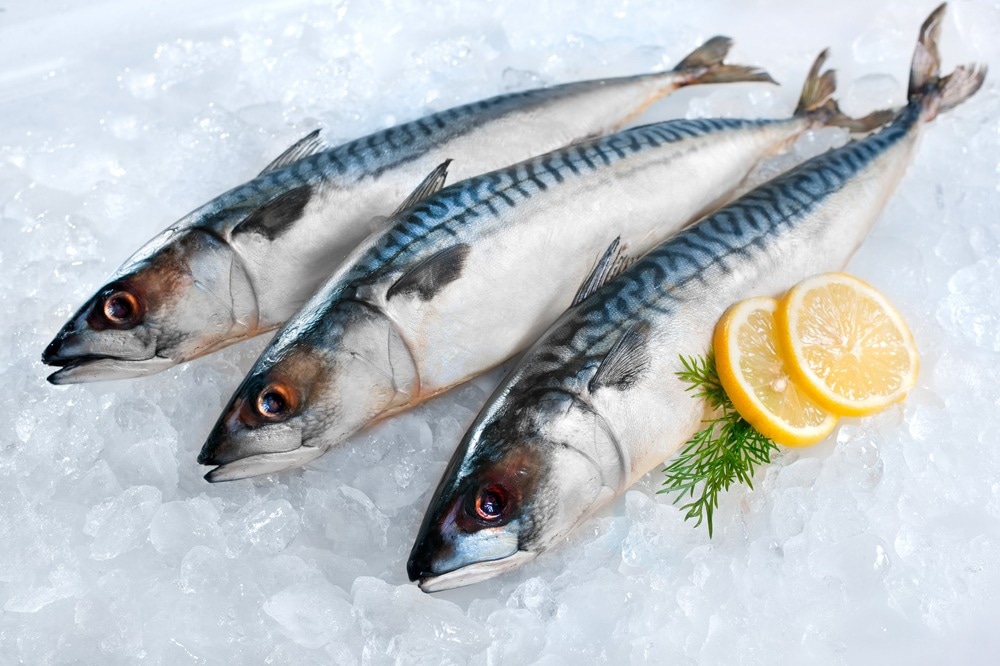Introduction
The theory behind the use
Investigation and results
References
Assessing the freshness of fish continues to be a painful and long-winded task for the fishing industry. However, there are many ways of evaluating freshness based on physical, chemical, microbiological, and sensory parameters. These methods have many limitations, such as the required skills, cost, and time consumed.
One of the most commonly used parameters is TVBN (total volatile base nitrogen levels), a spoilage indicator for highly perishable seafood. TVBN gives varied results based on different species that are measured. Therefore, a standardized method for analyzing the freshness of fish is needed. This article will discuss the role of flow cytometry as a potential method for analyzing freshness.

Image Credit: Alexander Raths/Shutterstock.com
The theory behind the use
Flow cytometry is widely used to analyze biological matter's chemical and physical aspects. It involves suspending cells in a fluid which are then passed through a laser to reveal the different characteristics and features of the cells. The flow cytometry technique has also undergone many improvements in identifying biological events; it's a much more attractive technique compared to the many currently used methods.
Flow cytometry can be used to measure the mitochondrial membrane potential or activity. The mitochondria are the powerhouse of any living cell and provide it with its livelihood. So the analysis of mitochondria post-mortem gives a good insight into how fresh the cells are. The mitochondria play a role in releasing enzymes and other oxidative reactions, essential in energy production, which impact its nutritional quality.
However, in the post-mortem state, the muscle cells are deprived of nutrients and oxygen, disrupting the normal mitochondrial process. The longer the cells lack these nutrients, the more significantly the mitochondrial activity is disturbed. This indicates that mitochondrial activity is an effective and sensitive biomarker for freshness.
Investigation and results
A recent study analyzed isolated mitochondria from sea bass fillets post-mortem. These organelles were analyzed for membrane potential using flow cytometry.
European seabass (Dicentrarchus labrax) was the choice of fish analyzed; the muscle cells were used as the source of cells. Membrane potential measurements were recorded using various probes. The membrane potential of mitochondria is known to decrease post-mortem; measurements of mitochondrial membrane potential were recorded at 5-time points over seven days, with the first measurement being taken 2 hours after death.
The results showed a prominent decrease in membrane potential; the seabass, post-mortem, lost mitochondrial membrane potential over time. The membrane potential of mitochondria is crucial in producing ATP, the energy currency of a cell, and the transport of nucleic acids, proteins, and ions, therefore providing a good indication for the quantity and quality of nutrient content in the cells.
The loss of the mitochondrial membrane potential also positively correlates with increasing ROS (reactive oxygen species), which associates with necrotic processes that usually occur post-mortem and can cause irreversible damage. Therefore the membrane potential of mitochondria could be a convenient biomarker for the damage to the fish. The results also showed that the damage was linear over time, and this can be an indicator to extrapolate and predict the extent of freshness over time.
Through the study, the freshness of fish measured can be categorized using mitochondrial membrane potential into three levels: high freshness, intermediate freshness, and low freshness. High freshness is where high membrane potential is sustained. Intermediate freshness is where membrane potential is lost but can be recovered by adding substrates. A low level of freshness is where membrane potential can not be recovered even after adding substrate.
Even though flow cytometry appears to be an incredibly reliable and useful source in determining the freshness of fish, it has its drawbacks, like many other methods that are in use. The instruments used for flow cytometry can be very sophisticated and expensive. These complex instruments would mean that they are highly prone to problems and need a trained specialist and ongoing maintenance by service engineers, which would also add to the expenses. Also, the method used should be further developed to ensure the accuracy and precision of the results.
From all the investigations on fish freshness, it can be concluded that using biomarkers to validate the freshness of fish is a superior method for freshness analysis, not only due to the biochemical insight into freshness but also due to the systematic and reliable nature of the measurements. Using flow cytometry could be crucial in objectively comparing the freshness of different aquatic animals as it gives us a quantitative value to compare freshness with.
However, the use of biomarkers is not only limited to fish, as literature has presented convincing evidence for freshness analysis of other animal proteins as well, opening up a more definitive way for determining the freshness and nutrient content of all our food.

Image Credit: Madrock24/Shutterstock.com
References:
- Soret, M., Bouchendhomme, T., Cleach, J., Jouy, N., Crola Da Silva, C., Devin, A., Grard, T., & Lencel, P. (2022). Measurement of fish freshness: Flow cytometry analysis of isolated muscle mitochondria. Food chemistry, 373(Pt B), 131690. https://doi.org/10.1016/j.foodchem.2021.131690
Further Reading
- All Flow Cytometry Content
- Using Flow Cytometry in Disease Diagnosis
- Flow Cytometry and Drug Discovery
- Using Flow Cytometry in Biomarker Detection
- Flow Cytometry Methodology, Uses, and Data Analysis
Last Updated: Jul 18, 2022

Written by
Storay Amiri
Storay attended the University College of London (UCL) to Study Master of Pharmacy and graduated in 2021 with First Class Honors. A four-year integrated master degree with a detailed focus on all parts of medication, from chemistry to body therapeutics, pharmacology, pharmaceutics, and more.
Source: Read Full Article
